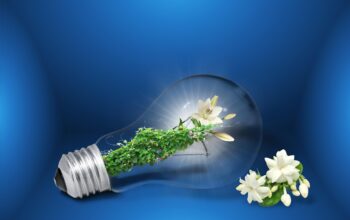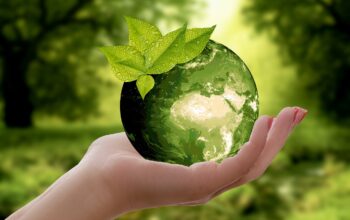Learning from Nature’s Genius
In the quest for sustainable solutions, innovators are increasingly looking to an age-old source of inspiration: nature itself. This approach, known as biomimicry, is gaining traction across various industries as we seek to create more environmentally friendly products and systems.
Self-Cleaning Surfaces
One of the most exciting developments in biomimicry is the creation of self-cleaning surfaces inspired by lotus leaves. These surfaces repel water and dirt, reducing the need for chemical cleaners and conserving water. From building facades to solar panels, this technology is being applied to improve efficiency and reduce maintenance costs.
Energy-Efficient Structures
Architects and engineers are drawing inspiration from termite mounds to design buildings with superior natural ventilation. These structures can maintain a comfortable internal temperature with minimal energy use, significantly reducing the carbon footprint of large buildings. Some estimates suggest that biomimetic designs can cut energy consumption by up to 40% compared to conventional structures.
Water Harvesting Technologies
In arid regions, innovators are looking to desert beetles for water harvesting solutions. These insects have evolved to collect water from fog, a principle now being applied to create mesh structures that can harvest water from the air. This technology could provide a sustainable water source for communities in water-scarce areas.
Implications for Sustainability
The rise of biomimicry in sustainable design is more than just a trend; it’s a fundamental shift in how we approach problem-solving. By emulating nature’s time-tested patterns and strategies, we can create solutions that are not only more effective but also inherently more sustainable.
As we face growing environmental challenges, biomimicry offers a promising path forward. It reminds us that some of the most innovative solutions to our problems may have been right in front of us all along, hidden in the intricate designs of the natural world.
References:
- https://climatecosmos.com/climate-news/the-biggest-sustainability-trend-of-2025-and-why-its-controversial/
- https://www.simplilearn.com/top-technology-trends-and-jobs-article
- https://www.winssolutions.org/sustainability-news-march-17-23-2025/
- https://www.sciencedaily.com/news/earth_climate/sustainability/
- https://totalenergies.com/news/press-releases/totalenergies-publishes-its-sustainability-climate-2025-progress-report-and
- https://www.bgsu.edu/earthmonth.html
- https://www.winssolutions.org/the-state-of-sustainability-in-2025/
- https://www.epa.gov/environmental-topics
- https://www.greenlodgingnews.com/top-eight-sustainability-trends-impacting-business-travel-in-2025/
- https://www.earthday.org
- https://www.globenewswire.com/news-release/2025/03/27/3050728/28124/en/Environment-Friendly-and-Sustainable-Food-Market-Outlook-2025-2029-Featuring-Profiles-of-Key-Players-WhiteWave-Foods-Company-Amy-s-Kitchen-Earthbound-Farm-Ben-Jerry-s-Homemade-and-.html
- https://www.edutopia.org/article/outdoor-and-environmental-education-resources/
- https://www.mckinsey.com/capabilities/sustainability/our-insights
- https://www.constructiondive.com
- https://greeninitiative.eco/2025/03/27/how-sustainability-is-driving-consumer-behavior-in-2025-and-what-it-means-for-your-business/
- https://www.edutopia.org/article/implementation-strategy-new-technology-schools
- https://www2.deloitte.com/us/en/insights/industry/technology/digital-media-trends-consumption-habits-survey/2025.html
- https://www.worldwildlife.org



